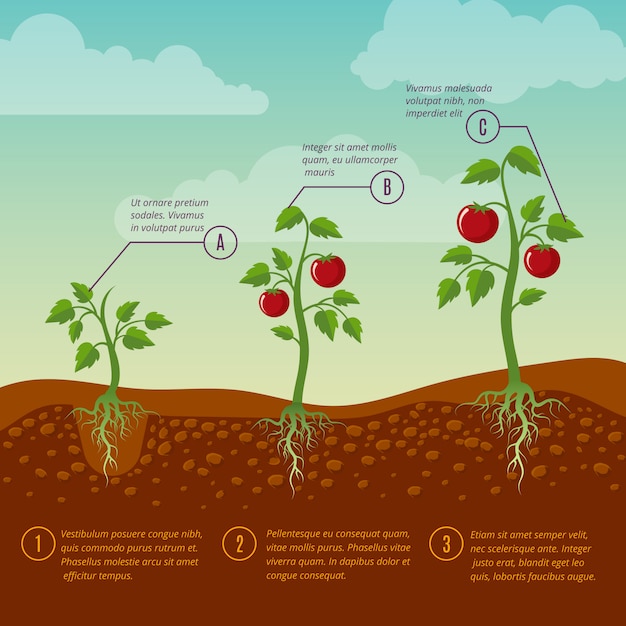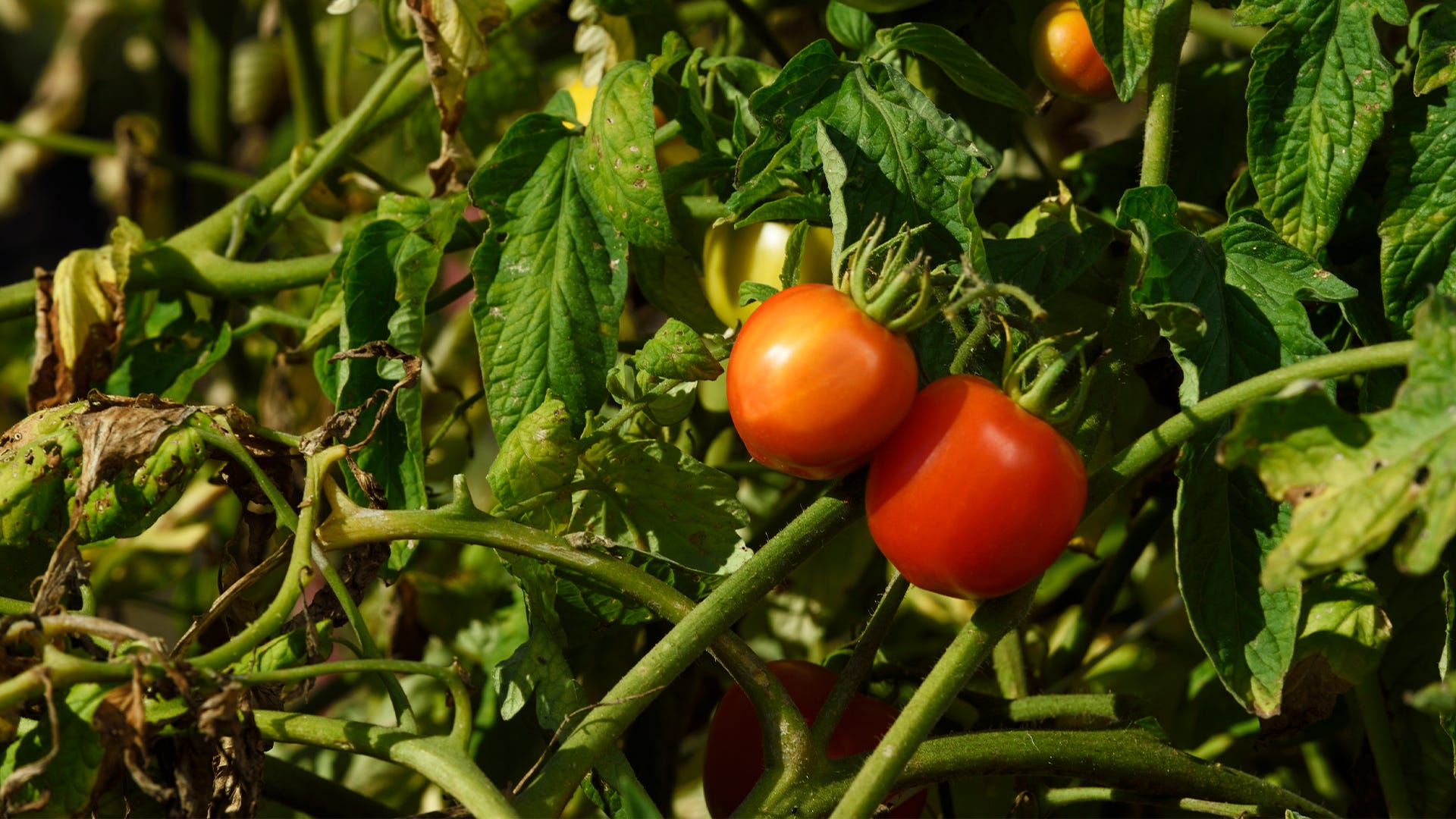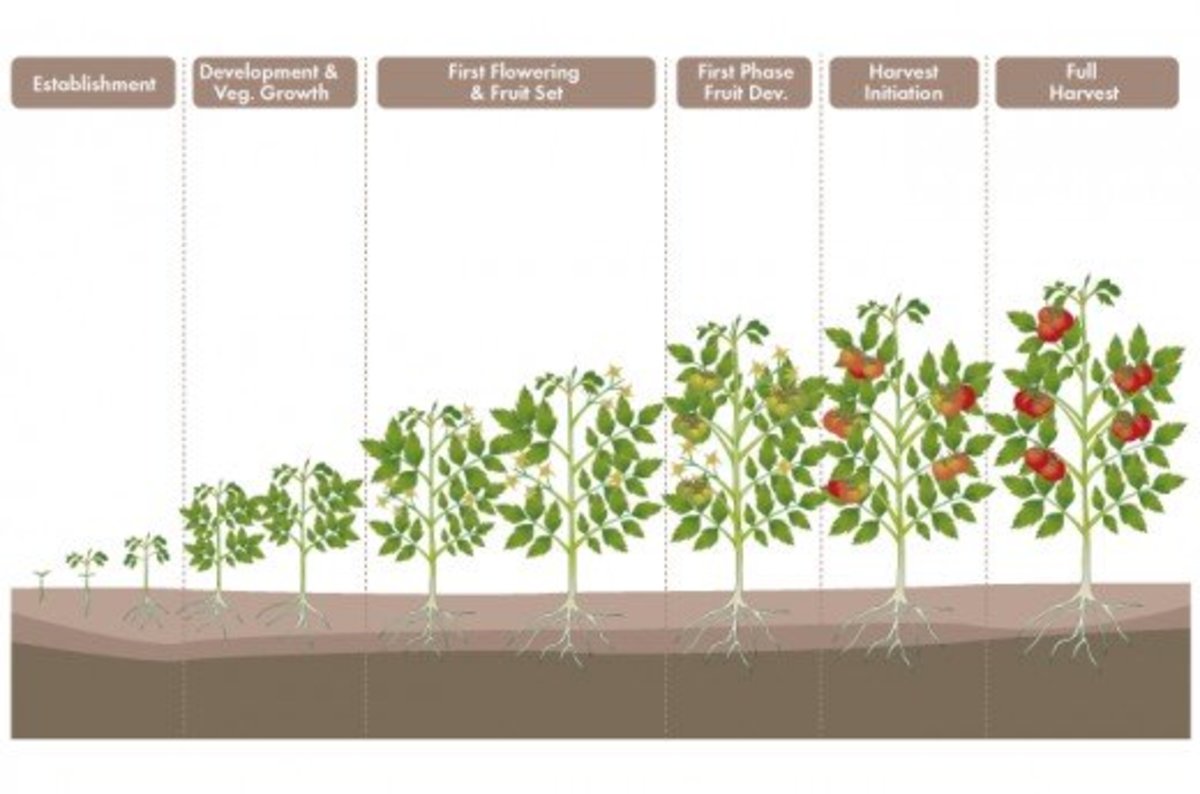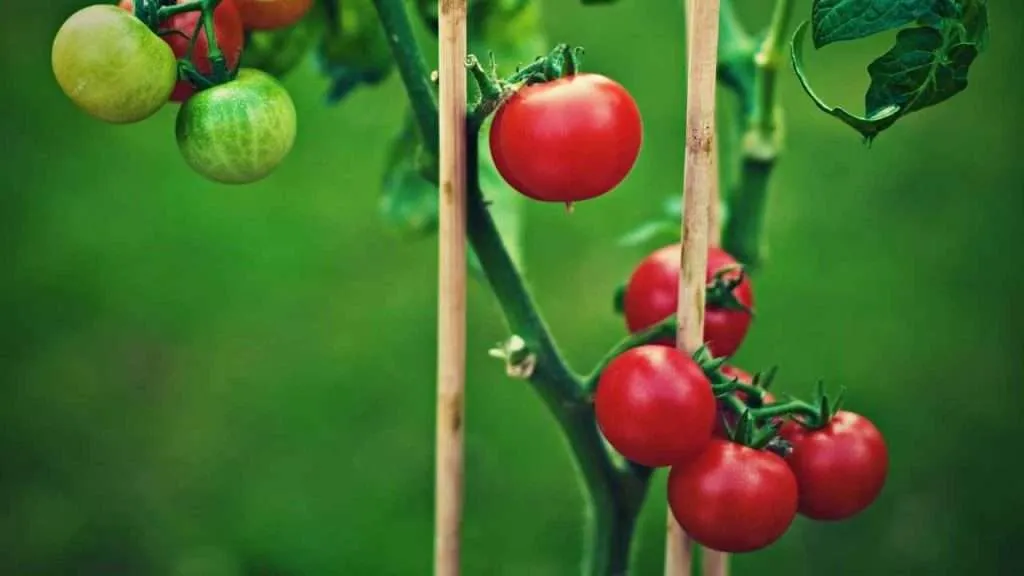Understanding the Life Cycle of Tomato Plants
Tomato plants undergo a series of growth stages, from seed germination to fruit production. Understanding these stages is crucial to optimize growing conditions and maximize yields. The life cycle of a tomato plant can be divided into several distinct phases, each with its unique characteristics and requirements.
The first stage is seed germination, which typically occurs within 7-14 days after sowing. During this phase, the seed absorbs water, and the embryo begins to grow. The seedling stage follows, lasting around 1-2 weeks, where the seedling develops its first set of leaves and roots.
As the seedling grows, it enters the transplanting stage, which can take around 1-2 weeks. This is a critical phase, as the seedling needs to be handled carefully to prevent damage to its delicate roots. Once transplanted, the seedling enters the vegetative growth stage, where it develops its stem, leaves, and roots.
After 6-8 weeks, the plant reaches the flowering stage, where it produces flowers and eventually fruit. This stage is critical, as it determines the plant’s yield and fruit quality. The fruiting stage follows, where the plant produces tomatoes, which can take around 60-90 days from sowing.
Understanding the life cycle of tomato plants is essential to provide optimal growing conditions, including temperature, light, water, and nutrients. By recognizing the different stages, growers can take proactive measures to prevent common problems, such as pests, diseases, and nutrient deficiencies.
Moreover, knowing the life cycle helps growers to plan and prepare for the next stage, ensuring a smooth transition and minimizing stress on the plant. This, in turn, can lead to healthier plants, higher yields, and better fruit quality.
While the exact duration of each stage may vary depending on factors such as climate, soil quality, and variety, understanding the life cycle of tomato plants is crucial for successful cultivation. By recognizing the different stages, growers can take a more informed approach to growing their tomato plants, ultimately leading to better results.
So, how long do tomato plants take to grow? The answer lies in understanding the life cycle and providing optimal growing conditions. With proper care and attention, tomato plants can thrive, producing delicious and nutritious fruit for months to come.
Factors Affecting Tomato Plant Growth Rate
Several factors can influence the growth rate of tomato plants, and understanding these factors is crucial to optimize growing conditions and maximize yields. Climate, soil quality, watering, fertilization, and pruning are some of the key factors that can impact tomato plant growth.
Climate plays a significant role in determining the growth rate of tomato plants. Temperature, humidity, and sunlight exposure can all impact plant growth. Tomato plants thrive in warm temperatures between 65-70°F (18-21°C), and optimal sunlight exposure is essential for photosynthesis. In areas with extreme temperatures or limited sunlight, growers may need to provide supplemental lighting or shading to support healthy growth.
Soil quality is another critical factor that can impact tomato plant growth. Well-draining, fertile soil with a pH between 6.0-6.8 is ideal for tomato plants. Soil with poor drainage or inadequate nutrients can lead to stunted growth, reduced yields, and increased susceptibility to disease. Growers can improve soil quality by adding organic matter, such as compost or manure, and using crop rotation techniques to maintain soil fertility.
Watering is also essential for tomato plant growth. Consistent moisture levels, especially during the fruiting stage, are critical for optimal growth. However, overwatering can lead to root rot, while underwatering can cause stress and reduce yields. Growers should aim to provide about 1-2 inches of water per week, either through rainfall or irrigation.
Fertilization is another factor that can impact tomato plant growth. Tomato plants require a balanced diet of nutrients, including nitrogen, phosphorus, and potassium. Growers can use a variety of fertilizers, including organic and synthetic options, to provide essential nutrients. However, overfertilization can lead to reduced yields and environmental pollution.
Pruning is also an essential factor that can impact tomato plant growth. Pruning helps to promote healthy growth, increase yields, and reduce disease susceptibility. Growers should prune their tomato plants regularly to remove suckers, weak growth, and diseased or damaged leaves.
By understanding and optimizing these factors, growers can create an ideal environment for their tomato plants to thrive. While the exact duration of tomato plant growth may vary depending on these factors, providing optimal growing conditions can help to support healthy growth and maximize yields.
So, how long do tomato plants take to grow? The answer lies in understanding the factors that influence growth rate and providing optimal growing conditions. With proper care and attention, tomato plants can thrive, producing delicious and nutritious fruit for months to come.
How to Create an Ideal Environment for Tomato Plants
Creating an ideal environment for tomato plants is crucial for optimal growth and fruit production. By providing the right conditions, growers can support healthy growth, maximize yields, and enjoy a bountiful harvest. Here are some tips on how to create an ideal environment for tomato plants.
Choosing the right container is essential for tomato plant growth. Tomato plants prefer well-draining soil and a container that is at least 5-gallons in size. Growers can use a variety of containers, including plastic pots, clay pots, or even grow bags. Regardless of the container, make sure it has drainage holes to prevent waterlogged soil.
Providing sufficient sunlight is also critical for tomato plant growth. Tomato plants require at least 6 hours of direct sunlight per day, but 8-10 hours is ideal. If growing indoors, consider using grow lights to supplement natural light. South-facing windows or greenhouses are ideal for tomato plant growth.
Maintaining optimal temperatures is also essential for tomato plant growth. Tomato plants prefer daytime temperatures between 65-70°F (18-21°C) and nighttime temperatures around 55-60°F (13-15°C). Avoid placing tomato plants near heating or cooling vents, fireplaces, or drafty windows.
Soil quality is also crucial for tomato plant growth. Use a well-draining potting mix specifically designed for tomato plants. Avoid using garden soil from your yard, as it can compact and prevent proper drainage. Fertilize your tomato plants regularly, using a balanced fertilizer that is high in phosphorus to promote fruiting.
Supporting your tomato plants is also essential for optimal growth. Use tomato cages, trellises, or stakes to provide support for the plants as they grow. This will help keep the plants upright, promote even fruiting, and prevent disease.
By creating an ideal environment for your tomato plants, you can support healthy growth, maximize yields, and enjoy a bountiful harvest. Remember to provide sufficient sunlight, maintain optimal temperatures, use well-draining soil, and support your plants as they grow. With proper care and attention, your tomato plants will thrive, producing delicious and nutritious fruit for months to come.
So, how long do tomato plants take to grow? By creating an ideal environment and providing optimal growing conditions, you can expect your tomato plants to produce fruit within 60-90 days of sowing. However, this timeframe can vary depending on factors such as climate, soil quality, and variety.
Tomato Plant Growth Stages: What to Expect
Tomato plants go through several growth stages, from seed germination to fruit production. Understanding these stages is crucial to provide optimal care and support healthy growth. Here’s what to expect during each stage:
Seedling Stage (1-2 weeks): During this stage, the seed germinates, and the seedling develops its first set of leaves. Keep the soil consistently moist, and provide indirect light. Avoid overwatering, which can lead to root rot.
Transplanting Stage (1-2 weeks): Once the seedling has 2-3 sets of leaves, it’s time to transplant it into a larger container or directly into the garden. Harden off the seedling by gradually exposing it to outdoor conditions over the course of 7-10 days.
Vegetative Growth Stage (2-4 weeks): During this stage, the plant develops its stem, leaves, and roots. Provide support for the plant using tomato cages or trellises. Keep the soil consistently moist, and fertilize with a balanced fertilizer.
Fruiting Stage (6-8 weeks): This is the most critical stage of tomato plant growth. The plant produces flowers, which eventually develop into fruit. Provide optimal growing conditions, including sufficient sunlight, water, and nutrients.
Harvesting Stage (6-12 weeks): Once the fruit is ripe, it’s time to harvest. Check the plants regularly for ripe fruit, and harvest them at the peak of freshness.
By understanding the different growth stages of tomato plants, growers can provide optimal care and support healthy growth. Remember to keep the soil consistently moist, provide sufficient sunlight, and fertilize regularly. With proper care and attention, tomato plants can thrive, producing delicious and nutritious fruit for months to come.
So, how long do tomato plants take to grow? The answer lies in understanding the growth stages and providing optimal growing conditions. With proper care and attention, tomato plants can produce fruit within 60-90 days of sowing.
Common Mistakes to Avoid When Growing Tomato Plants
When growing tomato plants, it’s easy to make mistakes that can impact the health and productivity of the plants. Here are some common mistakes to avoid and solutions to these problems:
Overwatering: Tomato plants don’t like wet feet, so avoid overwatering, which can lead to root rot and other problems. Check the soil moisture by inserting your finger into the soil up to the first knuckle. If the soil feels dry, it’s time to water.
Underwatering: On the other hand, underwatering can cause stress to the plants, leading to reduced yields and lower fruit quality. Make sure to water your tomato plants regularly, especially during hot weather.
Inadequate Support: Tomato plants need support as they grow, especially when they start producing fruit. Use tomato cages, trellises, or stakes to provide support and keep the plants upright.
Insufficient Sunlight: Tomato plants need at least 6 hours of direct sunlight per day to produce well. If you’re growing tomatoes in a shaded area, consider using grow lights to supplement the natural light.
Incorrect Soil pH: Tomato plants prefer a slightly acidic to neutral soil pH, ranging from 6.0 to 7.0. If your soil pH is too high or too low, it can impact the plant’s ability to absorb nutrients.
Not Mulching: Mulching around the plants can help retain moisture, suppress weeds, and regulate soil temperature. Use organic mulch like straw, bark chips, or grass clippings to mulch around your tomato plants.
By avoiding these common mistakes, you can help ensure the health and productivity of your tomato plants. Remember to provide optimal growing conditions, including sufficient sunlight, water, and nutrients, and support the plants as they grow.
So, how long do tomato plants take to grow? By avoiding common mistakes and providing optimal growing conditions, you can expect your tomato plants to produce fruit within 60-90 days of sowing.
How Long Does it Take for Tomato Plants to Produce Fruit?
One of the most common questions asked by tomato plant growers is how long it takes for the plants to produce fruit. The answer to this question depends on several factors, including the variety of tomato plant, growing conditions, and care.
On average, it takes around 60 to 90 days for tomato plants to produce fruit after sowing the seeds. However, this timeframe can vary depending on the specific variety of tomato plant. Some varieties, such as cherry tomatoes and patio tomatoes, can produce fruit in as little as 40 to 50 days, while larger varieties can take up to 120 days or more.
Factors that can influence fruit production include climate, soil quality, watering, fertilization, and pruning. Providing optimal growing conditions, including sufficient sunlight, water, and nutrients, can help to promote healthy growth and fruit production.
In addition to the variety of tomato plant and growing conditions, the care and maintenance of the plants can also impact fruit production. Regular pruning, training, and supporting the plants can help to promote healthy growth and maximize yields.
So, how long do tomato plants take to grow? The answer is that it depends on several factors, including the variety of tomato plant, growing conditions, and care. By providing optimal growing conditions and proper care, you can expect your tomato plants to produce fruit within 60 to 90 days of sowing.
Here’s a general timeline of what to expect:
Days 1-14: Seed germination and seedling growth
Days 14-28: Transplanting and vegetative growth
Days 28-42: Fruiting and flower production
Days 42-60: Fruit growth and ripening
Days 60-90: Harvesting and fruit production
Keep in mind that this is just a general timeline, and the actual timeframe may vary depending on the specific variety of tomato plant and growing conditions.
Maximizing Tomato Plant Yields: Tips and Tricks
Maximizing tomato plant yields requires a combination of proper care, attention to detail, and a few expert tips and tricks. Here are some techniques to help you get the most out of your tomato plants:
Pruning: Pruning is an essential technique for maximizing tomato plant yields. By removing weak and spindly growth, you can direct the plant’s energy towards producing more fruit. Remove any suckers that grow between the main stem and a branch, and trim back the tips of the branches to encourage bushy growth.
Training: Training your tomato plants to grow up a trellis or other support can help to maximize yields. This technique, known as “indeterminate” growing, allows the plant to grow upwards and outwards, producing more fruit and making the most of space.
Supporting: Providing support for your tomato plants is crucial for maximizing yields. Use tomato cages, trellises, or stakes to keep the plants upright and encourage them to grow upwards. This will also help to prevent disease and reduce the risk of damage from wind and rain.
Soil Conditioning: Soil conditioning is essential for maximizing tomato plant yields. Add organic matter such as compost or manure to the soil to improve its structure and fertility. This will help to promote healthy growth and maximize yields.
Pest and Disease Management: Pest and disease management is critical for maximizing tomato plant yields. Keep an eye out for common pests such as aphids, whiteflies, and hornworms, and use organic or chemical controls as needed. Regularly inspect your plants for signs of disease, and take action promptly if you notice any problems.
By following these tips and techniques, you can maximize your tomato plant yields and enjoy a bountiful harvest. Remember to provide optimal growing conditions, including sufficient sunlight, water, and nutrients, and to prune, train, and support your plants regularly.
So, how long do tomato plants take to grow? By maximizing yields and providing optimal growing conditions, you can expect your tomato plants to produce fruit within 60 to 90 days of sowing. With proper care and attention, you can enjoy a long and productive harvest season.
Conclusion: Growing Healthy and Productive Tomato Plants
Growing healthy and productive tomato plants requires a combination of knowledge, patience, and proper care. By understanding the life cycle of tomato plants, optimizing growing conditions, and avoiding common mistakes, you can enjoy a bountiful harvest of delicious and nutritious tomatoes.
Remember, the key to successful tomato plant growth is to provide optimal growing conditions, including sufficient sunlight, water, and nutrients. Regular pruning, training, and supporting the plants can also help to maximize yields and promote healthy growth.
So, how long do tomato plants take to grow? With proper care and attention, you can expect your tomato plants to produce fruit within 60 to 90 days of sowing. By following the tips and techniques outlined in this article, you can enjoy a long and productive harvest season.
Don’t be discouraged if you encounter setbacks or challenges along the way. Growing tomato plants is a process that requires patience, persistence, and practice. With time and experience, you’ll become a skilled tomato plant grower, and your harvests will become more abundant and delicious.
So, start growing your own tomato plants today With the right knowledge, care, and attention, you can enjoy a bountiful harvest of fresh, delicious tomatoes all season long.









